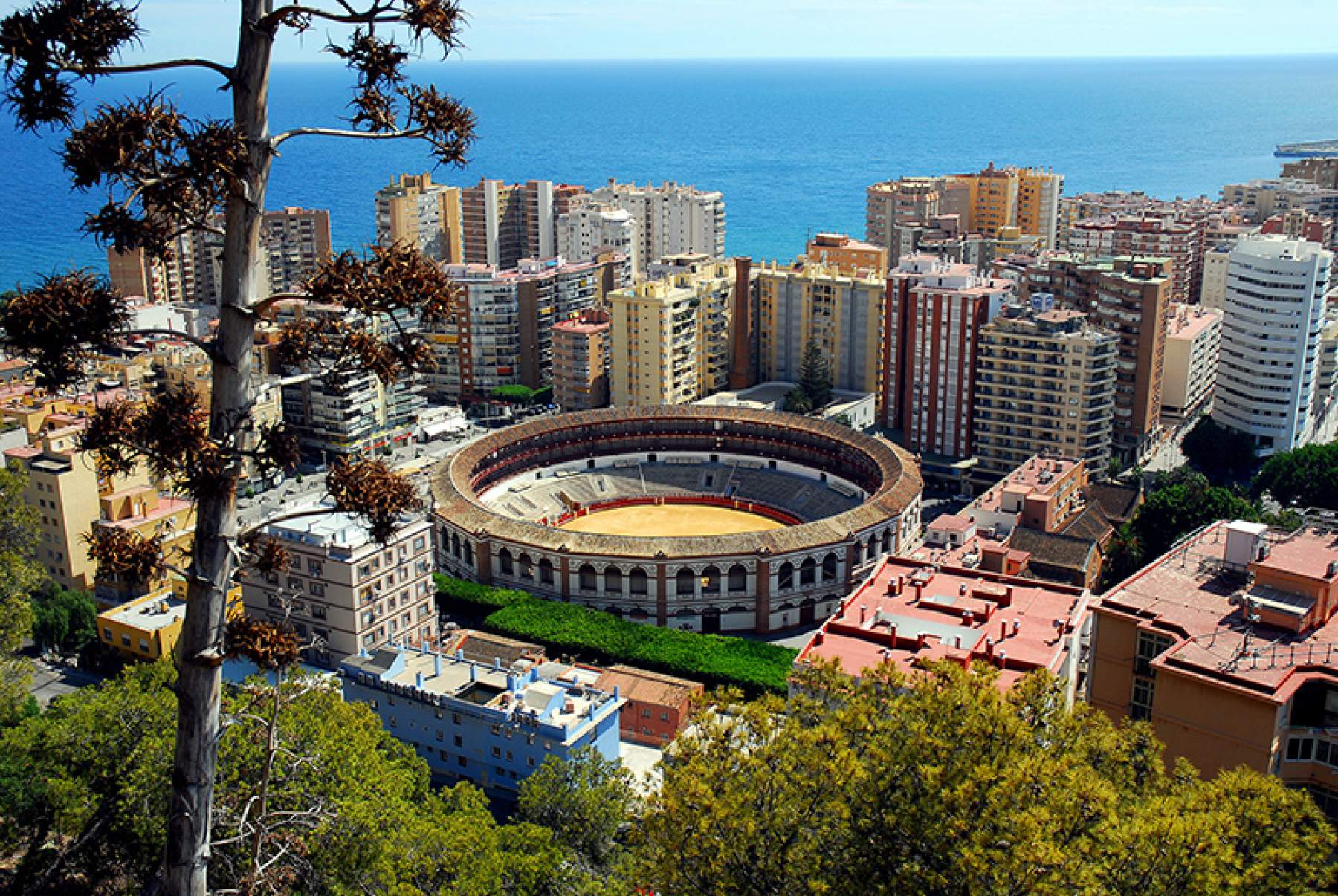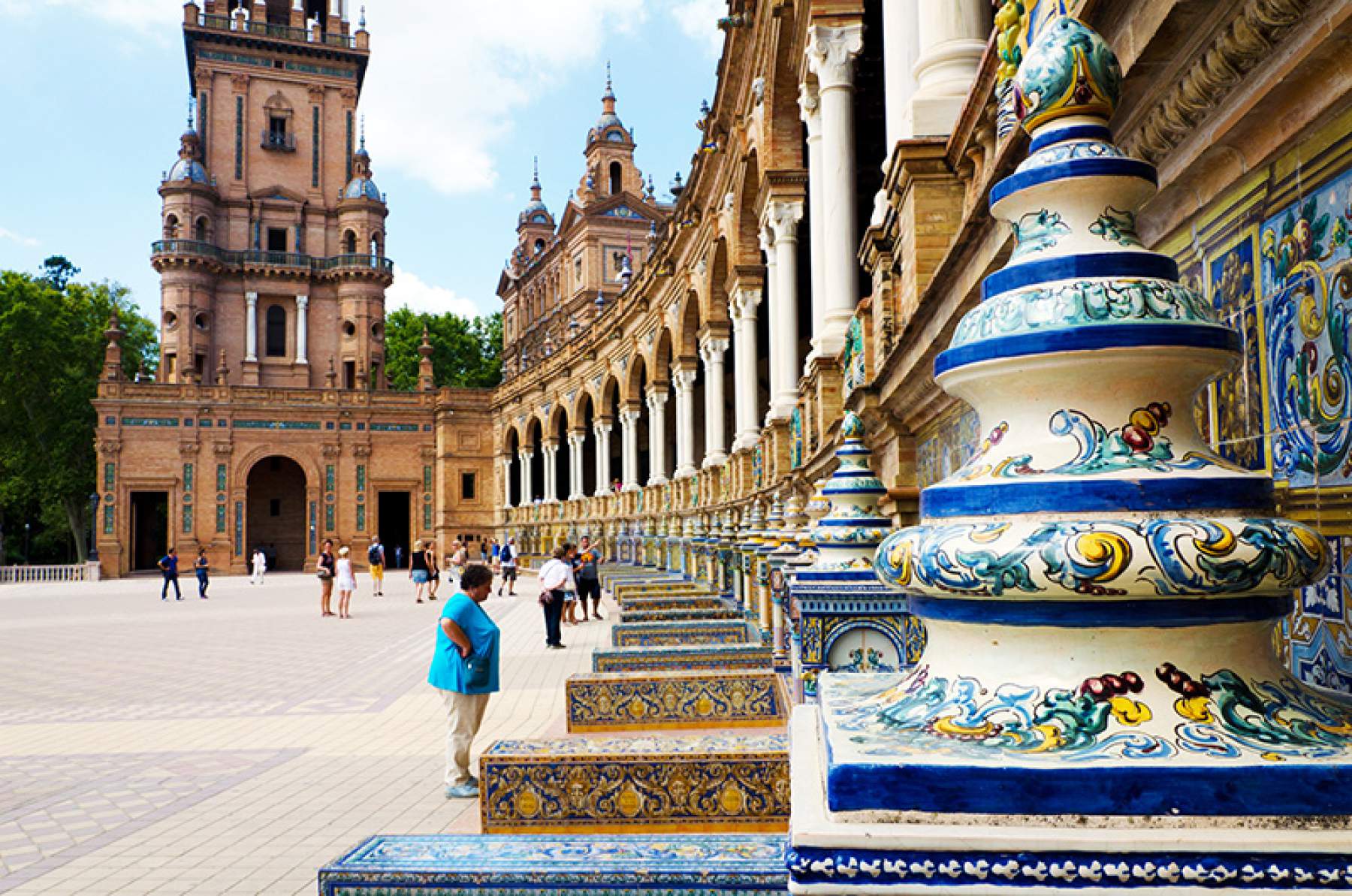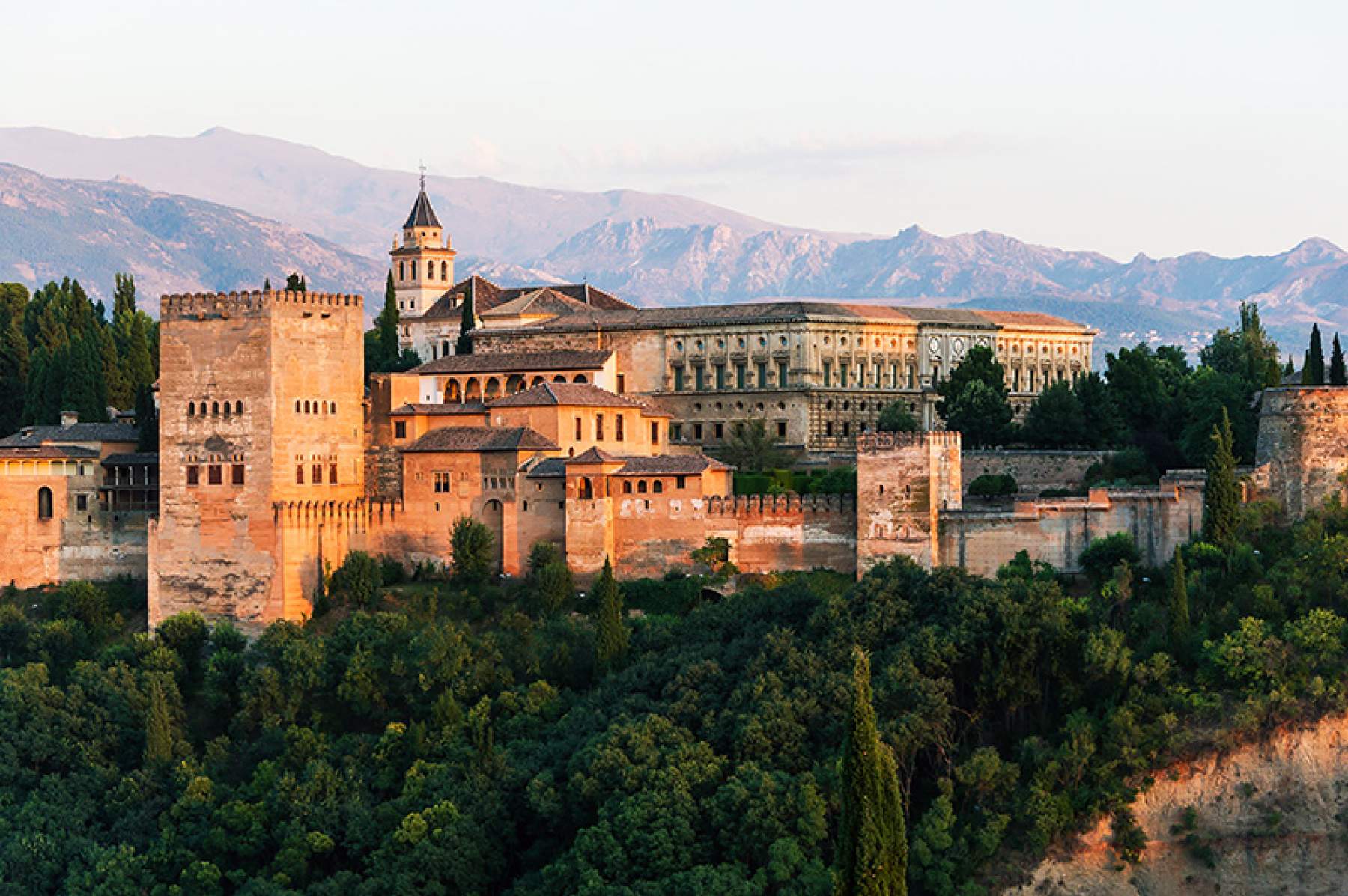Share the article
Table of Contents
Southern Spain is one of the most charming regions in Europe. The small towns and big cities compete in a display of charms and southern hospitality. The pristine coast, arid plains, fertile lands and majestic mountains create a breathtaking landscape that’s unique to the area. The city’s rich history, including many invasions from Romans to Moors, has left its mark on the architecture and the people’s way of living. The best way to explore the area is by car so hop on as we detail the highlights of what is to become one of your favourite road trips.
Road Trip in Andalusia: Where to Go
Day 1: Malaga to Seville
Start your journey in Malaga with a direct Air Transat flight from Montreal. Enjoy Malaga for as long as you’d like and when you’re ready to hit the road, head along the coast towards Marbella, where you can spend a few hours exploring the pristine beaches as well as the old city and its lovely cobblestone plazas. Once you’ve had enough of Marbella, head inland towards Ronda. Built on two rocky cliffs separated by a 100-metre deep canyon, Ronda’s location is not for the faint of heart. Of the three bridges spanning the gap of the canyon, the “Puente Nuevo” is the most spectacular. Built between 1751 and 1793, the 120-meter high bridge is one of Spain’s most famous and spectacular sights. Explore the rest of the historic city and stop by for lunch at one of the many restaurants with terraces overlooking the canyon.
After lunch, continue driving towards Seville. If you have time, stop in Zahara de la Sierra for a quick stroll. The small town is one of the many pueblos blancos or white towns of southern Spain. You can visit the remains of the Moorish castle in this very picturesque town.

Day 2: Seville
Take the day to explore gorgeous Seville, one of the most beautiful cities in Spain. Start your day with a cafe con leche and a churro con chocolate at one of the city’s many cafés then head to Seville’s most famous attraction: the Alcázar, a Moorish fort turned royal palace that’s still in use today. The Alcázar is regarded as one of the best examples of mudéjar architecture in Spain. Pay particular attention to the tile work as well as the intricate ornamental details that define this architectural style. Don’t forget to visit the exquisite gardens with their many water features.
Once your visit is done, head towards the 18th century Mercado de la Feria, the oldest market in the city. Walk the narrow alleys and admire the colourful displays of regional fruit, vegetables, meat and fish. Once you’ve worked up an appetite, head to the market’s very own La Cantina, a tavern serving extremely fresh fish and seafood tapas.
After lunch, wind your way through the Santa Cruz neighbourhood and enjoy its leafy streets and traditional architecture. Pass by the Espacio Metropol Parasol, locally known as the mushroom, a controversial interlocking wooden structure, which provides much-needed shade and an elevated walkway. Head towards the Seville Cathedral while everyone is enjoying that most sacrosanct of Spanish traditions: the siesta. The Catedral de Sevilla is the largest Gothic cathedral in the world and the third largest church. Once you’re done admiring the immense cathedral, head up the Giralda or bell tower for a great view of the city below.

Seville is a great walking city so wander around the centre and enjoy the gorgeous architecture. Make your way to the Plaza de España and enjoy the refreshing green spaces of the beautiful Parque de Maria Luisa.
Tapas are originally an Andalusia affair so take full advantage of this most Spanish tradition and go on a tapas crawl. Ask some of the locals what their favourite bars are and follow the trail. It’s not uncommon to hit up two or three bars a night and munch your way through the city as you partake in tasting some of the region’s best wines.
If you’re still not ready to go to bed, head to one of the many flamenco shows that Andalusia is famous for.
Day 3: Seville to Córdoba
Start your day early and take the short drive east from Sevilla to Córdoba, the warmest city in Europe. Córdoba is the Andalusian city that has managed to retain the most Moorish elements so it feels very different from all other surrounding cities. Start by exploring the Mezquita de Córdoba, a most astounding and unique cathedral that managed to retain all Moorish elements of its past as a mosque. The famous and stunning hall with red and white double arches granite is unforgettable. Spend the rest of the day walking around Córdoba’s old centre, one of the largest in Europe. Wind your way through the maze of streets in the old Jewish quarter and explore one of the most Arabic-influenced cities in Spain.

Day 4: Córdoba to Granada
After breakfast and some last minute sightseeing in Córdoba, hit the road towards Granada and stop by Antequera for some exploring and replenishing. Stunning limestone rock formations and the national reserve of El Torcal surround the beautiful white washed city. El Torcal is the perfect location for those who love to trek and climb. Antequera itself is worth exploring as the ancient city is filled with historical treasures such as its castle and several churches. Have lunch in Antequera then continue your journey towards what will surely become the highlight of your Andalusia road trip: Granada.
Day 5: Granada
Your day in Granada will most probably be spent exploring one of Spain’s most famous attractions: the Alhambra complex of palaces and fortresses. “Alhambra” means the Red Fortress in Arabic. It was built over several stages, the most important of which took place in the 13th and 14th centuries. The mostly square buildings are all built around central courtyards with gurgling fountains and pretty gardens. The central Palacio Nazaríes is the highlight of the Alhambra complex with its rectangular pool, lovely courtyard and large ensemble of rooms. The adjacent Patio de Los Leones is built using the Golden Ratio and demonstrates the perfect geometry of Islamic architecture. The patio’s centrepiece is the 11th-century fountain and its 11 marble lions.
The whole complex is overwhelming in its complexity and details. Keep in mind to always look up at the intricate ceilings, down at the stunning tile works and all around at the perplexing and sophisticated glorious epitome of Moorish mudéjar architecture.
Note: Make sure to buy your ticket to Alhambra in advance as the daily allowance gets sold out very quickly, especially during the high season. You will have to specify a time to visit the Nasrid Palaces. Book the earliest or latest spot if you want to be able to enjoy the sights better during peak season.

Day 6: Granada to Almería
The drive from Granada to Almería is probably one of the most stunning ones in Andalusia as it takes you through the majestic Sierra Nevada mountain range, the highest peaks in Spain. The valley below, Las Alpujarras, are dotted with small, picturesque villages. For a longer, more scenic route, take the road that goes along the eastern side of the mountains then head south towards Almería. Don’t forget to take the time to stop at some of the indicated miradores (viewpoints) for fantastic views of the landscape below or for an impromptu picnic.
Day 7: Almería to Malaga
Your last day on the road will be a leisurely drive along the stunning Costa del Sol coast. Stop by the beautiful little seaside town of Nerja for lunch and an afternoon of exploring. Nerja has a long history as evidenced by the Nerja Cuevas (caves) and their prehistoric paintings. Visit the caves then go for a walk on the Balcón de Europa a platform built in the old centre with a stunning view of the sea below. Explore the old city or spend the afternoon on the beach before heading back to Malaga for your last night in Spain before catching your Air Transat flight back to Canada.

If you have more time:
- Spend some time exploring and hiking the Sierra Nevada National Park.
- Take a day trip to Gibraltar, but don’t forget your passport, as it is part of the British Territories and you’ll need to cross a border.
- Explore the coast east of Almeria and the beautiful beaches of Cabo de Gata, which are still off the beaten path and almost deserted.
- Push further and spend a day in historic Cartagena.
- Spend an extra day or two in Seville and/or Granada, there is always more exploring to do in these two fascinating cities.
Fly to Andalusia on the wings of Air Transat and discover this wonderful region.
Cover photo credit: Adrien Sifre via Creative Commons under CC BY-NC-ND 2.0
The comments and contributions expressed are assumed only by the author. The recommendations, intentions or opinions expressed are not necessarily those of Transat AT Inc. or its affiliates. See terms of use of the Air Transat website.







